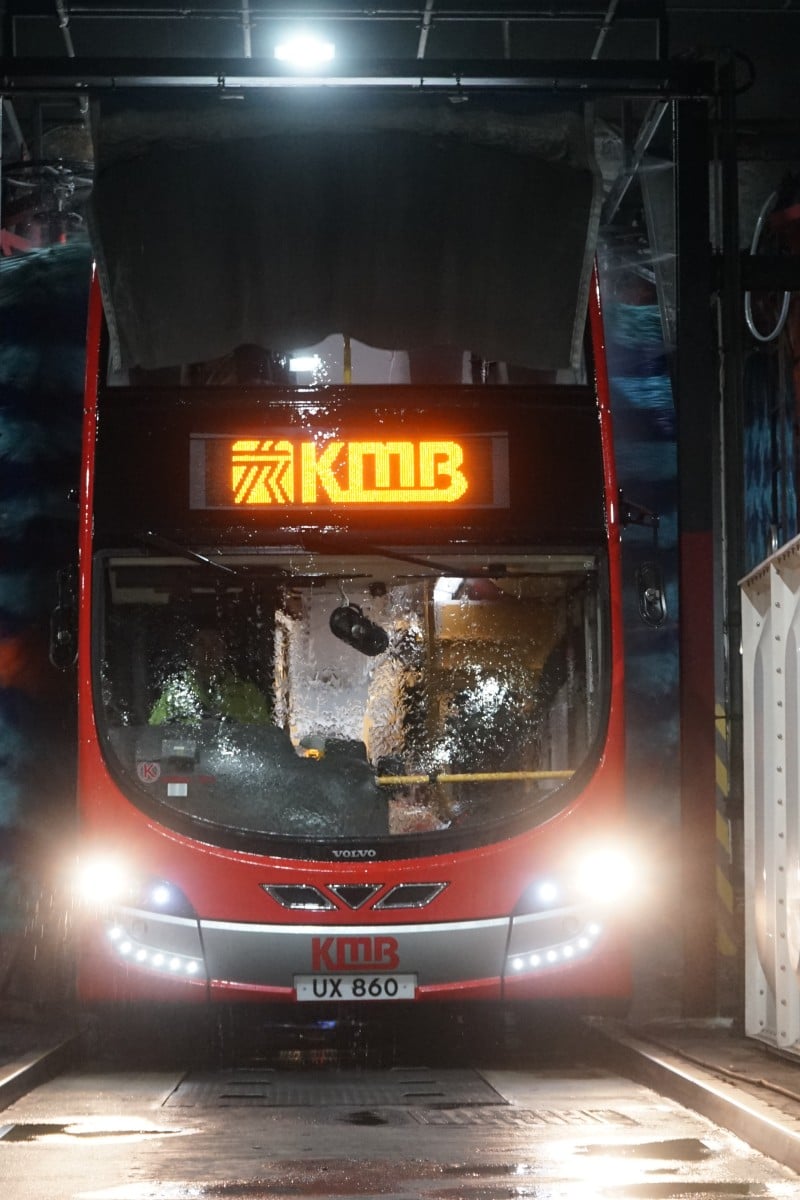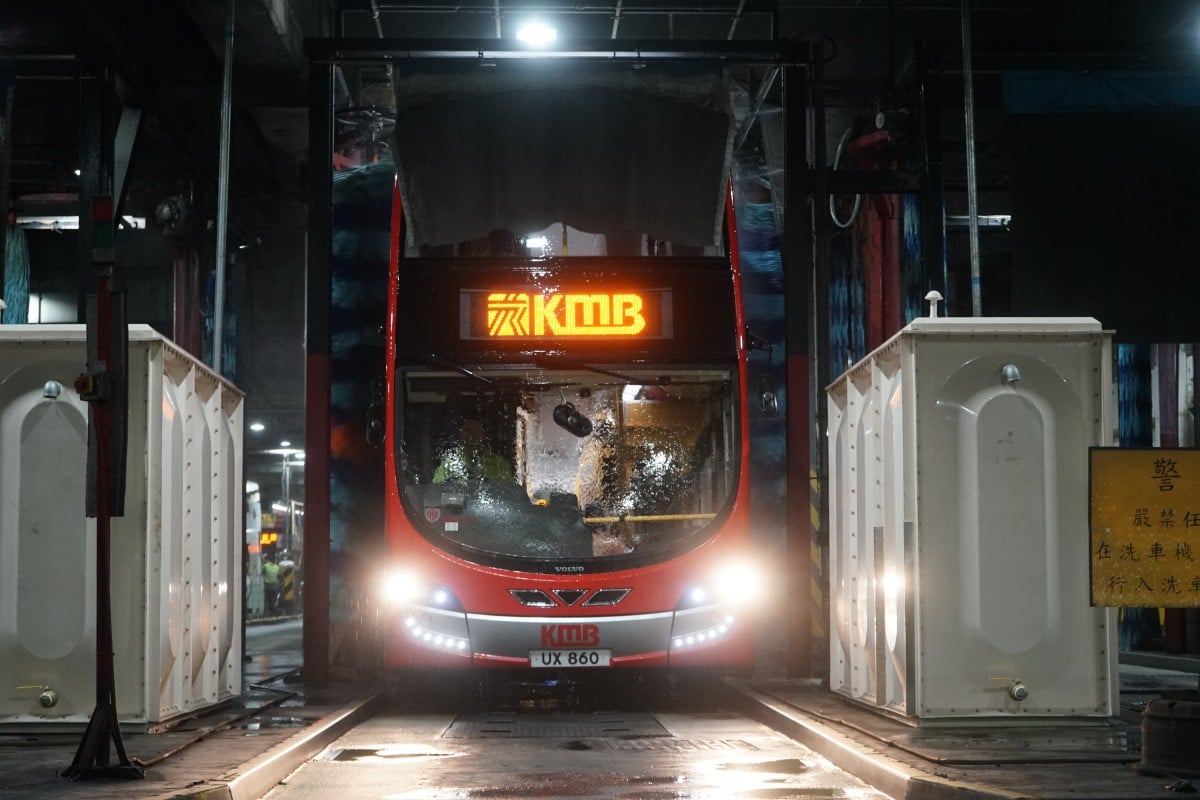
With nearly 4,000 vehicles on the road, Kowloon’s largest bus company has a careful system for keeping them all fuelled, clean and safe
 Buses go through a gigantic car wash after being fuelled.
Buses go through a gigantic car wash after being fuelled.The wheels on the bus may go round and round. But without proper care and a regular maintenance schedule, those wheels wouldn’t go very far at all.
With a fleet of more than 3,900 buses that serve 275,000 passengers daily, the Kowloon Motor Bus Company (KMB) must have a very streamlined process to keep everything running smoothly and (relatively) on schedule.
That process starts with the buses arriving at one of the city’s many depots at the end of the day. Like the East Kowloon main depot in Kowloon Bay that Young Post toured last month, each facility has the equipment to perform the three major service checks that every bus undergoes on a fixed schedule. These are fuelling, cleaning and maintenance.
Fuelling the buses’ huge, 250-litre fuel tanks is surprisingly easy. Using the same superfast Positlock system that aeroplanes use, an oilman can top up a bus in roughly two minutes thanks to a 135-litre-per-minute, high-speed nozzle.
Sze Sui-tak, who has worked as an oilman for more than 30 years, told us about the best part of his day. “It’s seeing the buses come back here to ‘feed’. I feel happy when they’re ‘full’ and ready for work,” he says.
Apart from fuelling, the buses are cleaned daily, starting with a full-body wash. Cleaners then sweep the compartments and mop the floors using bleach. They also wipe down surfaces that are frequently touched by passengers, such as handrails.
This is a prelude to a more thorough cleaning that is done once a month, including washing the buses’ air filters and air-conditioning ducts, and heavy scrubbing of the outer side of the vehicles.
But the most important thing is maintenance. Louis Ho, Senior Manager of Bus Maintenance at the Kowloon Bay depot, said: “Customer safety is always our number one priority.” This is reflected in a regular maintenance schedule which includes testing every major system on a bus, including the chassis, engine, brakes, body and electrics.
It’s not just a few knocks on random places with a hammer either. For example, KMB uses advanced diagnostic software to make sure bus engines are running properly. There is a special system to test a vehicle’s brakes at different speeds, while the screws on the doors, windows and even seats are regularly checked to ensure everything is in top shape.
After all these tasks are completed, the buses can finally find a nice parking spot at the depot and hunker down for the night. As the weather in Hong Kong is mild (compared to the harsh winters in places like Canada), it doesn’t matter very much if they are parked outdoors. Therefore, the spaces are randomly assigned; some get to stay indoors while the rest are parked on the roof of the multi-storey complex.
So the next time you’re on a bus, remember that a lot of work is needed to keep those wheels going round and round.
